The 10 best stands at BIAF 2024: our selection
The 33rd edition of the Florence Biennale Internazionale dell’Antiquariato (BIAF) has been confirmed as one of the top events for the art and antiques market worldwide. Since 1959, the event has attracted collectors, experts, curators and enthusiasts, confirming it as an essential showcase for anyone wishing to admire and purchase masterpieces of art and objects of historical value. Held at the splendid Palazzo Corsini along the banks of the Arno River, the Biennale is not only a celebration of Italian antiques, but also an international platform where the world’s best galleries and most influential art dealers meet.
Each edition of BIAF is an experience that allows one to travel through the centuries, discovering works from different eras and styles, and offering collectors and connoisseurs the chance to discover unique pieces. In such a rich and varied context, it is natural to wonder what were the highlights and especially which stands made the difference in this 33rd edition. The quality of the proposals was very high across the board, and the selection was really difficult (it would have been useful to extend it, but we stuck to our principle of choosing only ten exhibitors, this time really reluctantly!). However, some exhibitors were able to stand out for the originality and value of the works on display, the care with which they set up their spaces and, last but not least, for their ability to tell stories and bring to life a past that is intertwined with the present. In our journey to discover the ten best booths of the Florence Biennale Internazionale dell’Antiquariato 2024, let us therefore see which galleries have made their mark.
Finestre sull’Arte’s selection of the ten best booths, which we present here without making a ranking but simply in the order of how they are encountered along the itinerary of the visit to the fair, is based not only on the quality, novelty and rarity of the works exhibited, but also on the layout, innovation in presentation, and the ability to create a dialogue between the works and the visitors. As always, the selection comes after a visit by our editorial staff and following discussions with fellow journalists and art historians who, like us, have visited BIAF. Hence our response. Here, then, are the ten stands that demonstrated the ability to transform the Biennale experience into a unique journey.
Read also: Live coverage of BIAF 2024 - The 15 best works (with prices)
1. Charles Orsi
Charles Orsi’s stand features three highlights: the Madonna and Child with Magdalene, a rediscovered painting by Titian (it was executed by the Cadore master perhaps around the early 1650s, and then modified a few years later by his collaborator Girolamo Dente: this is the position of scholar Enrico Maria Dal Pozzolo), Frans Floris’s Susanna and the Old Men , an extraordinary painting by one of the most “Italian” of the sixteenth-century Flemish painters, and then the splendid Still Life by Fede Galizia . But these are not the only surprises that Charles Orsi has in store for the public of the International Antiques Biennale. Less conspicuous, but important for seventeenth-century Florentine arts, for example, is a Crucifixion by Giovanni Battista Foggini, a wax model for the silver work executed for the Chapel of the Blessed Sacrament in Pisa Cathedral. Quality, in short, is really not lacking here.
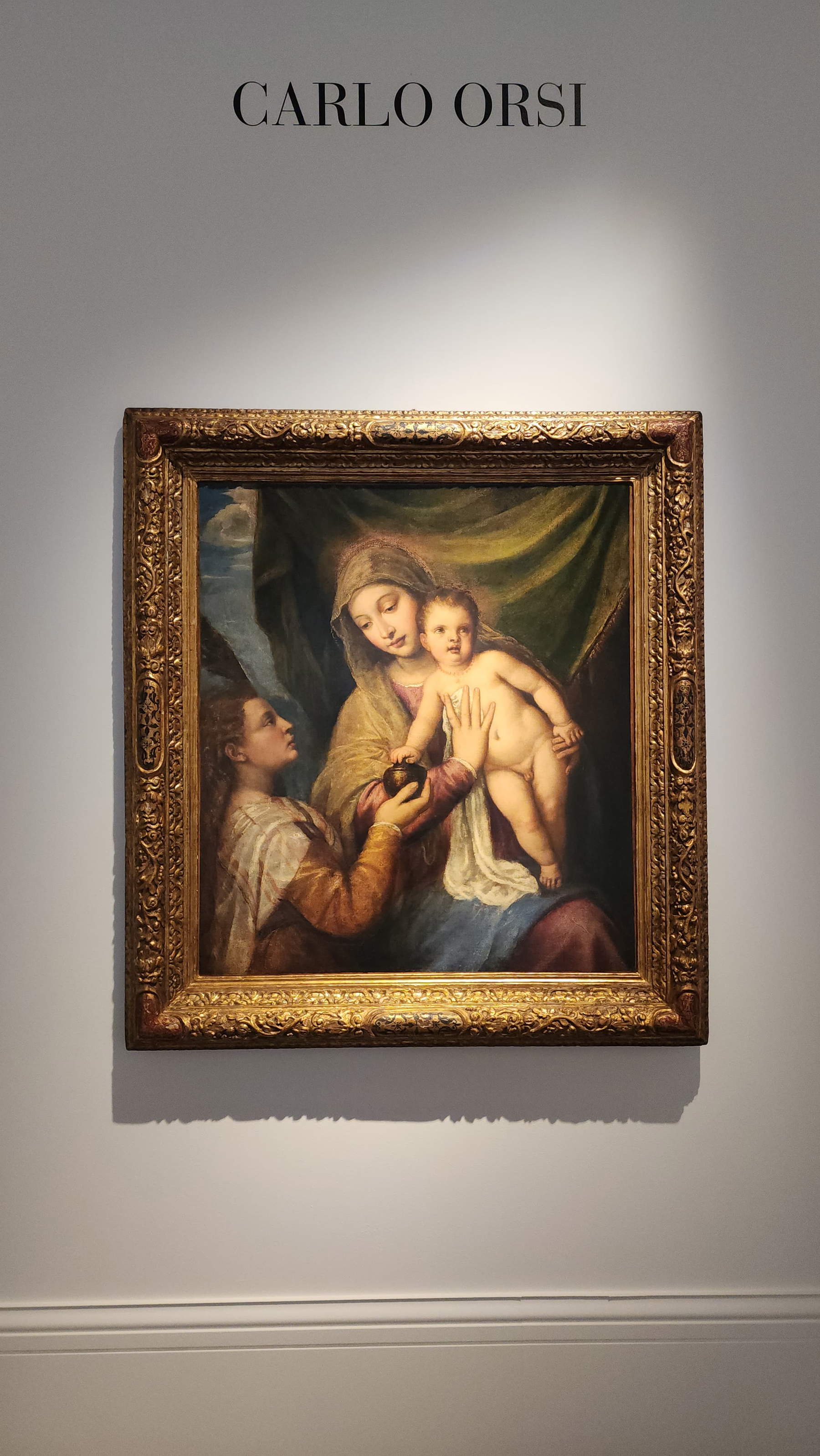
2. Dickinson
The London gallery now directed by Milo Dickinson, who took over the reins of the family business from his father Simon, is among those that have come into the limelight the most, especially because of a sheet that is causing much discussion, since it is attributed to the young Michelangelo: it would be his first known work. It is not the only object worthy of attention, however: works from the medieval period (a Scene from the Life of Saint Nicholas by Bicci di Lorenzo and a Nativity by the Master of Verucchio) are worth seeing, as well as a sumptuous portrait of Alessandro Allori that is one of the finest pieces in the entire BIAF.
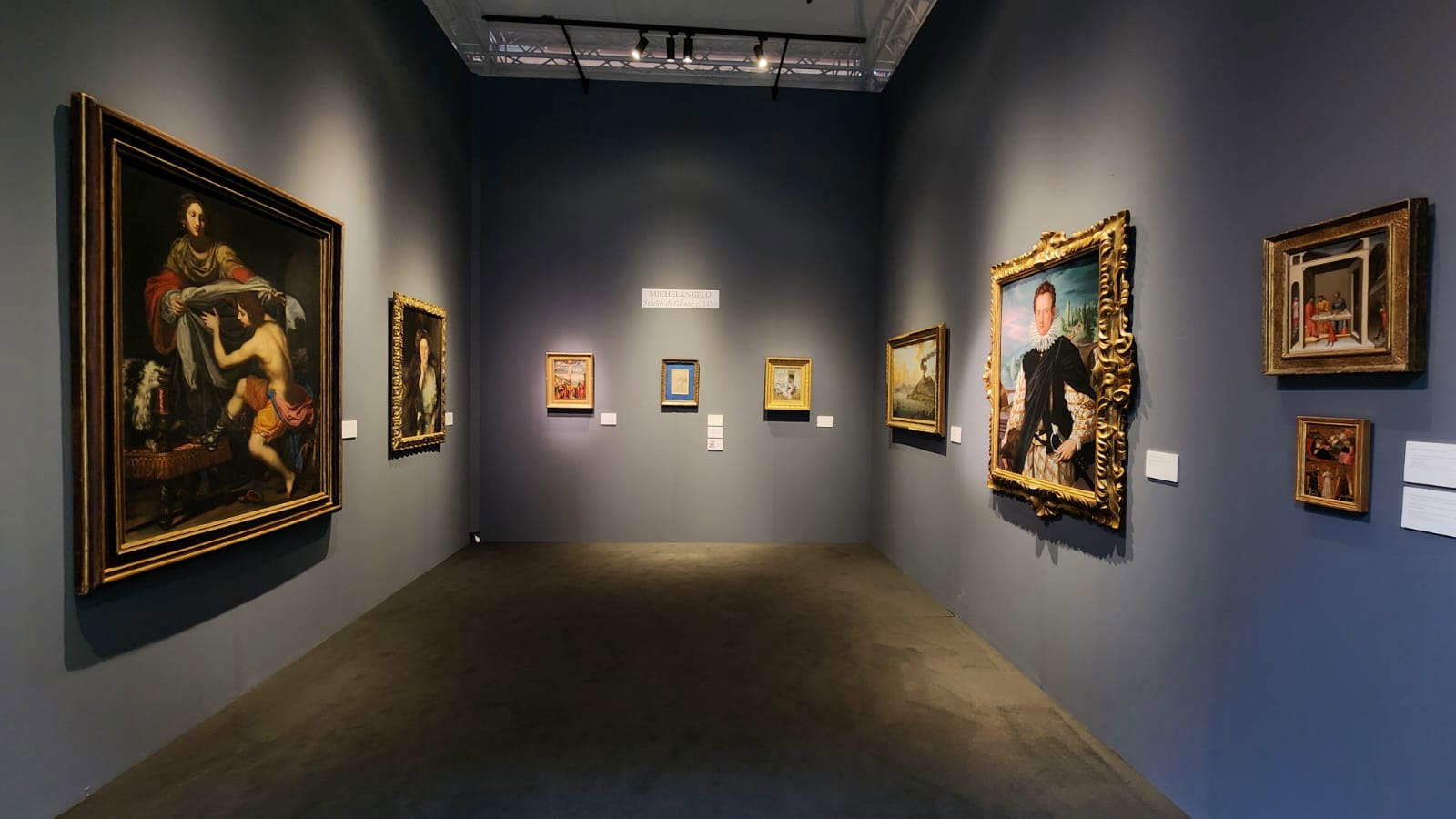
3. Canesso
Few works at Canesso’s booth, but all of the highest quality. They could easily be in a museum, starting with Bronzino’s €2.5 million Madonna and Child , which is somewhat the star of this BIAF. But on the next wall the succession is spectacular: a teddy bear by Bartolomeo Bimbi, a Holy Family with St. John by Giulio Cesare Procaccini, and a Lament of Amita by Bartolomeo Cavarozzi, all works with long pedigrees and that would delight the most discerning and refined collectors (as well as wealthy, of course, since they are all high-priced works).

4. AL Fine Art
Antonacci Lapiccirella Fine Art presents a lively and versatile offering featuring nineteenth- and twentieth-century showpieces: Among the works to be viewed carefully are an extraordinary and not-so-common portrait by Vincenzo Camuccini depicting the miniaturist August Grahl, of sustained quality (it is one of the best portraits of his production), a splendid pastel by Umberto Boccioni that the public was able to see last year at the exhibition on theFuturist artist at the Magnani Rocca Foundation, a masterpiece by the Swedish artist Gustav Fjaestad as well as a large ceramic by Leoncillo to enhance an art form that is perhaps left a little on the sidelines in this BIAF, with exceptions like this one, of course. The backdrop is a large work by Tancredi Parmiggiani from 1952, the year of his adherence to Spatialism, a movement that is all found in this high-level work.
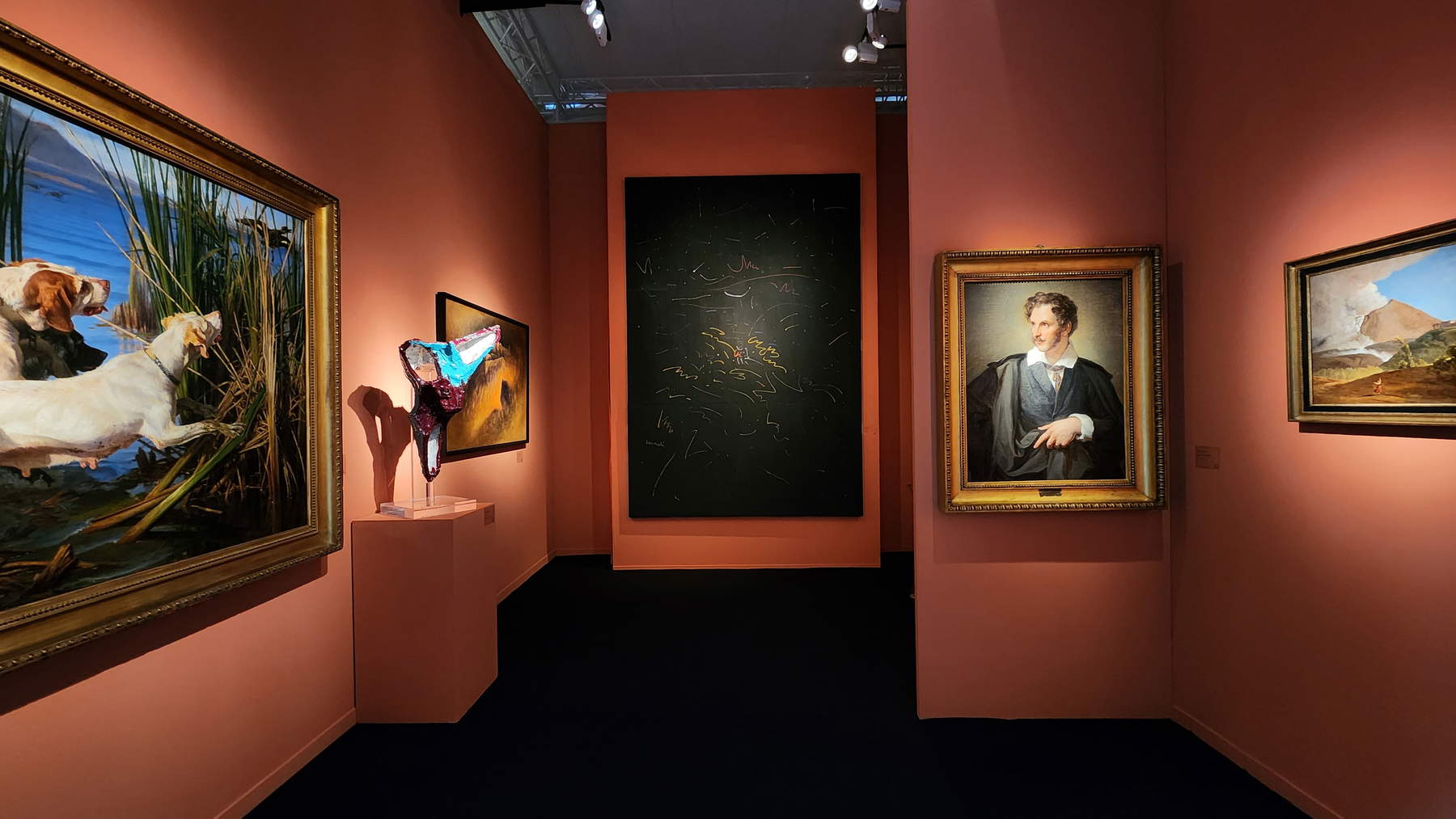
5. Altomani&Sons
A sequence of outstanding works merits Altomani&Sons’ entry in our top ten: Guido Reni’s Amorini are among the most interesting pieces in the entire Biennial, the same reasoning applies to Guercino’s San Sebastiano (it was recently exhibited at the Guercino exhibition held in Turin), and then not to be missed is the curious model for the equestrian monument to Francesco III Duke of Modena, the work of Francesco Antonio Casarini of Carrara, who condenses all his skill into little more than half a meter of marble. Also of interest is a female portrait by an unknown hand (the author is defined, with a vaguely Longhi formula, as the “Friulian Friend of Dosso”), among the pinnacles of sixteenth-century portraiture to be seen at BIAF.
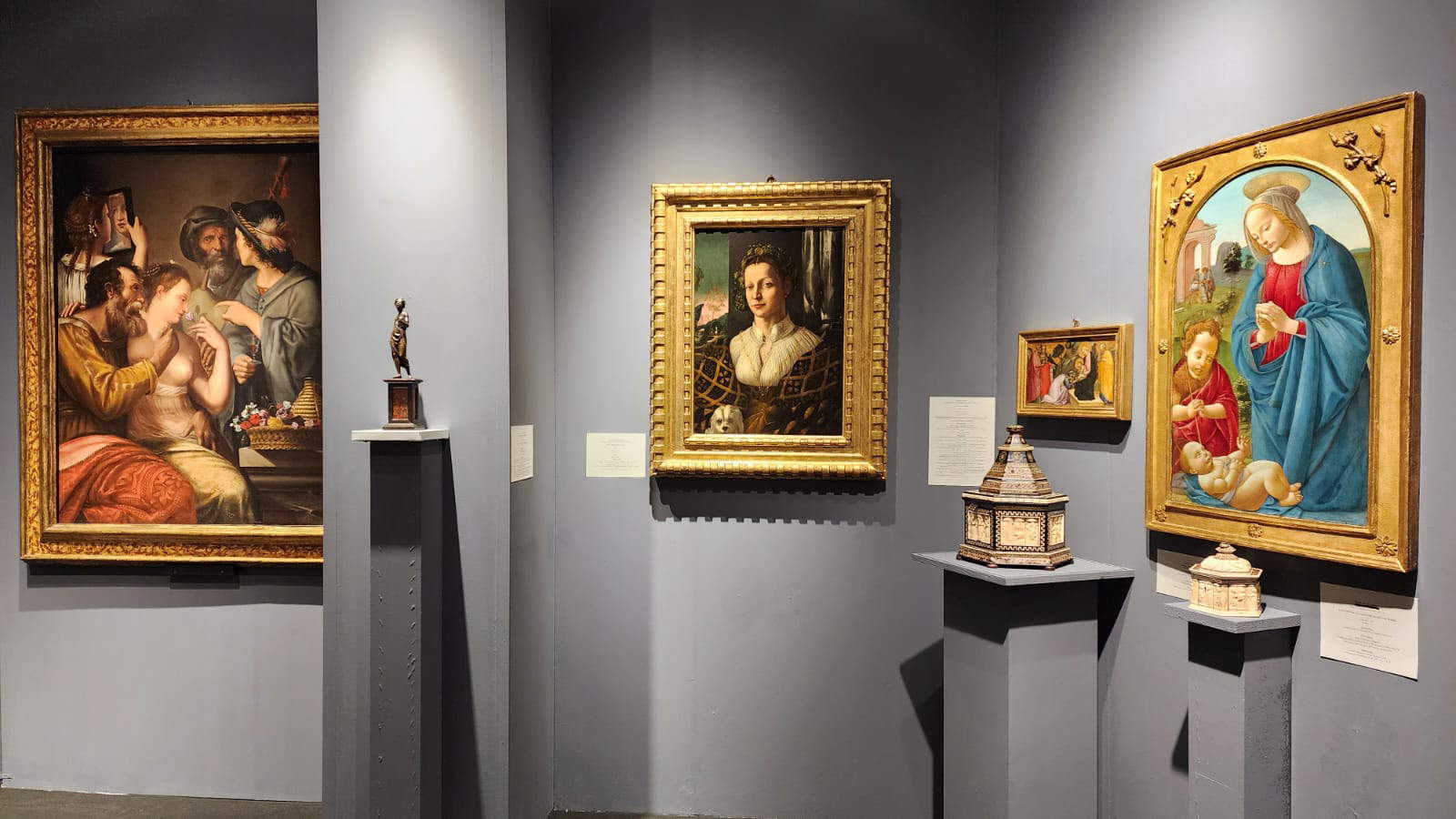
6. Secol-Art
The Turin gallery of Mr. and Mrs. Masoero impressed us with its eclectic proposal, the most varied in the entire exhibition, supported, however, by aesthetic coherence: it ranges from antique furniture to ceramics, from twentieth-century art (there is a beautiful still life by Filippo de Pisis that is the centerpiece of the booth and has an illustrious provenance: It was in fact in Riccardo Gualino’s collection and also passed through Giorgio Salice’s, so whoever buys it can boast of being the continuator of a high collecting tradition) to drawing, and there is also a curious section devoted to comics and cartoons, with a large canvas by Hugo Pratt and an original production cel of the Disney-branded Jungle Book . The idea of Secol-Art, a gallery founded in 1984, is to appeal both to an established audience of collectors with traditional tastes and to a new class of enthusiasts who may be looking for new things.
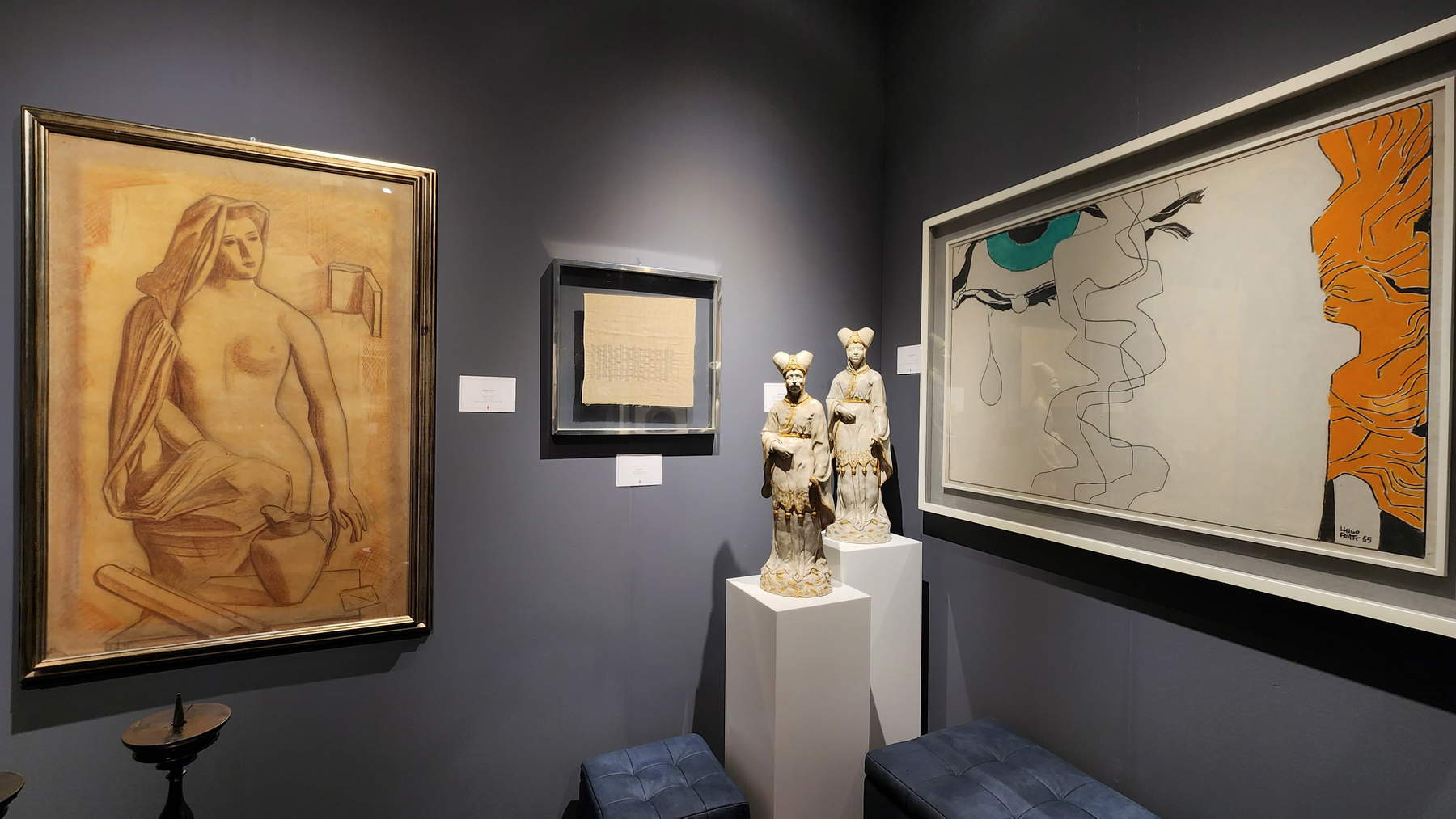
7. 800/900 ArtStudio
The quality of nineteenth- and twentieth-century art at this BIAF is very high indeed, and in all the booths dealing with the field there is something to be surprised and delighted about, but 800/900 ArtStudio’s booth seems to have gone a step further, not only in the consistency of its proposal, but also in the possibility of seeing things that even in museums are not allowed to see: where can you find a wall chock-full of Lorenzo Viani’s high-quality paintings in an Italian museum (minus the Galleria d’Arte Moderna e Contemporanea in his native Viareggio)? Such a Viani, an artist long mistreated by critics and museums, can only be seen here. What’s more, there are works of a high standard, and with a long history, by several important names of our nineteenth century: Niccolò Cannicci, Luigi Gioli, Plinio Nomellini, Vittorio Corcos and others, right down to the postmacchiaioli and Labronici.
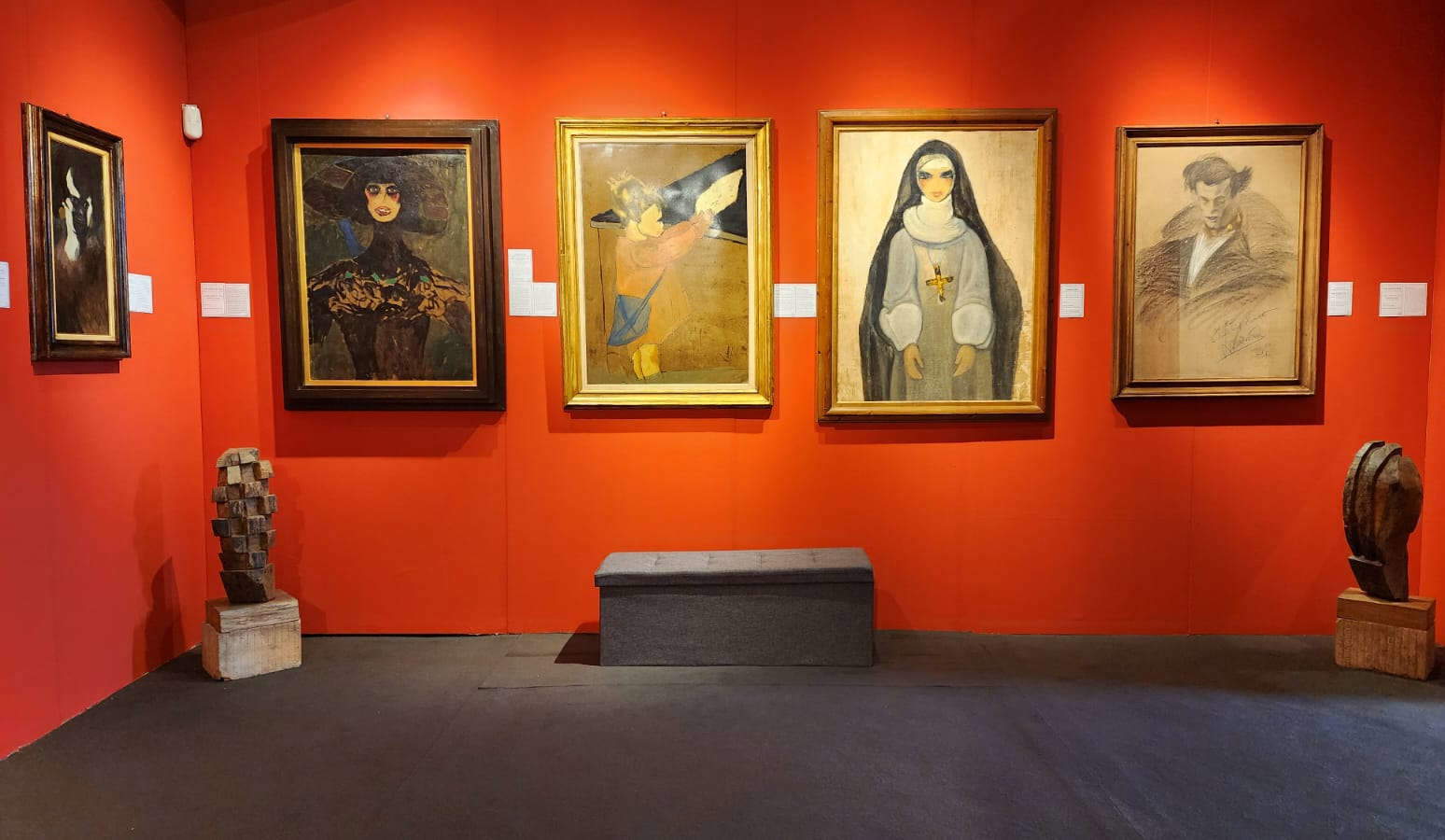
8. Salamon
In the Throne Room of Palazzo Corsini, its usual location, Salamon’s booth exhibits one of the masterpieces of this edition of BIAF, Giacomo Ceruti’s Bearers Playing Cards , the only work from the Padernello cycle by the great Lombard artist remaining on the market. Other works of note, in a setting that, as is typical of the Milan gallery, is reminiscent of that of a museum (in terms of distance between works, lighting, presentation, overall impression, and captions), certainly include the Nativity by Andrea Previtali, a perhaps too undervalued tondo by Piero di Cosimo made known by Gustavo Frizzoni in 1890 and once in the Borromeo collection (it was restored in view of this BIAF and has thus returned to the eyes of public and critics to rekindle interest in its account), a Crucifixion by Giovanni Antonio da Pesaro already exhibited in several shows. It is difficult to find other stands of such high quality.

9. Flavio Gianassi FG Fine Art
Flavio Gianassi’s booth is worth a long visit if only for two reasons: the four screaming grotesque heads by Gian Lorenzo Bernini, the authentic revelation of this BIAF, a work about which everyone is talking (they were cast for the artist’s personal carriage, who then dismantled them and kept them in his collection: they have remained in the hands of his heirs ever since), and for Giovanni da Rimini’s crucifix, recently displayed in the exhibition. Also worth seeing are the tondi by Bicci di Lorenzo presented a few months ago at TEFAF and the predella compartment, also by Bicci di Lorenzo.

10. Caretto&Occhinegro
Among the few booths that never disappoint is that of Caretto&Occhinegro, the youngest gallerists playing on these levels and for years have specialized in Flemish and Dutch art. This year the selection brought to the show is of a really high level (not that in past editions of BIAF or other fairs the two Turin-based antiquarians had presented a lower proposal, but this year the pieces are really surprising). A core not far from what the gallery had brought to TEFAF, but with a more intimate flavor: there is a sympathetic Feast in the Village by David Vinckboons, the very luminous Madonna and Child by the Master of the Adoration of Antwerp, a St. Jerome by the naturalized Flemish Lombard Ambrosius Benson (real name Ambrose Benzone), a Landscape with Wayfarers by Sebastian Vranckx that stands out for its modernity. Most people’s attention was catalyzed by a Nocturnal Landscape with Stories of Ceres by Jan Brueghel I, but how could we overlook Frans Floris’ Judith , which dialogues at a distance with the other heroine, Susanna, painted by the Flemish painter and visible at the Orsi booth? Almost the closing of an itinerary.
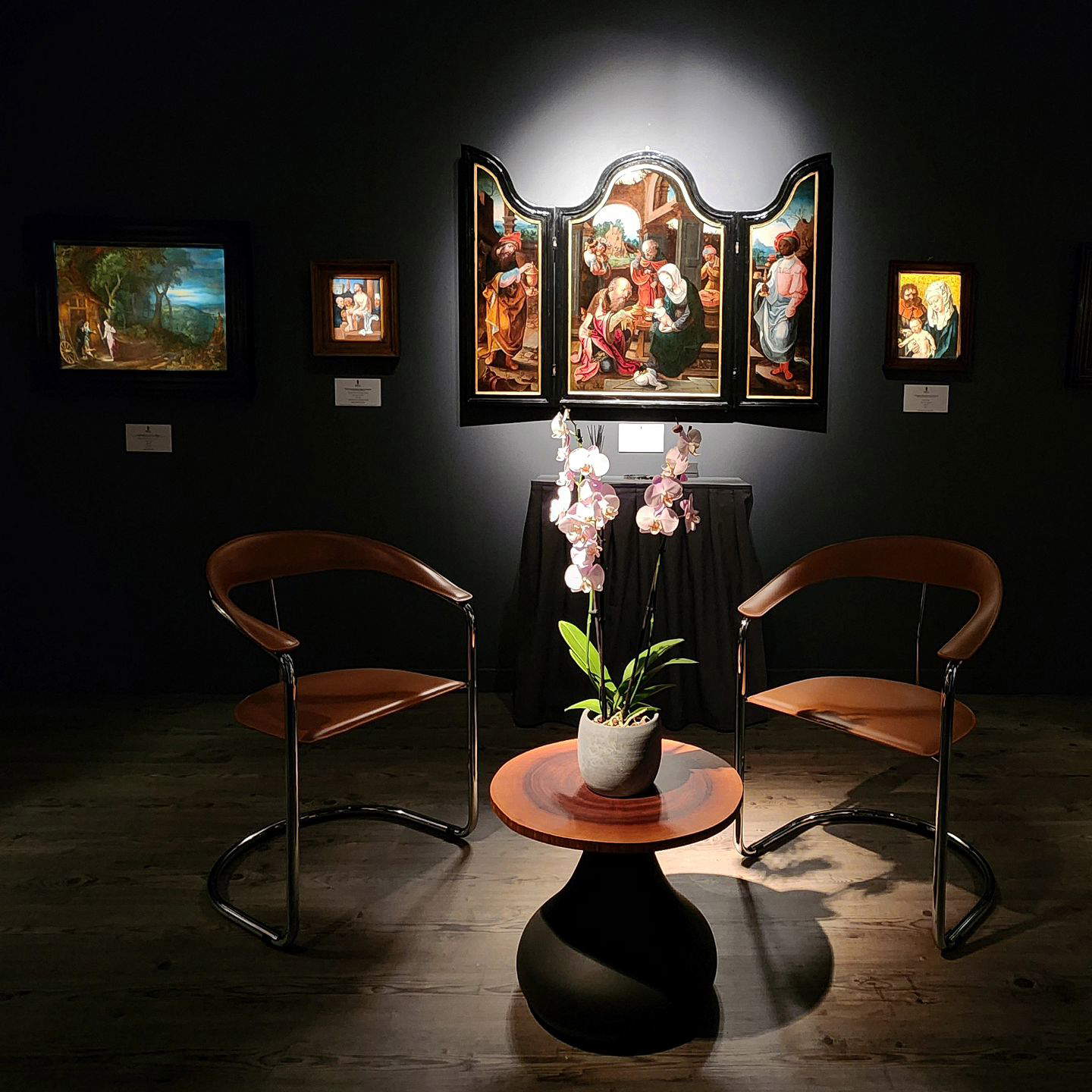
Warning: the translation into English of the original Italian article was created using automatic tools. We undertake to review all articles, but we do not guarantee the total absence of inaccuracies in the translation due to the program. You can find the original by clicking on the ITA button. If you find any mistake,please contact us.



























